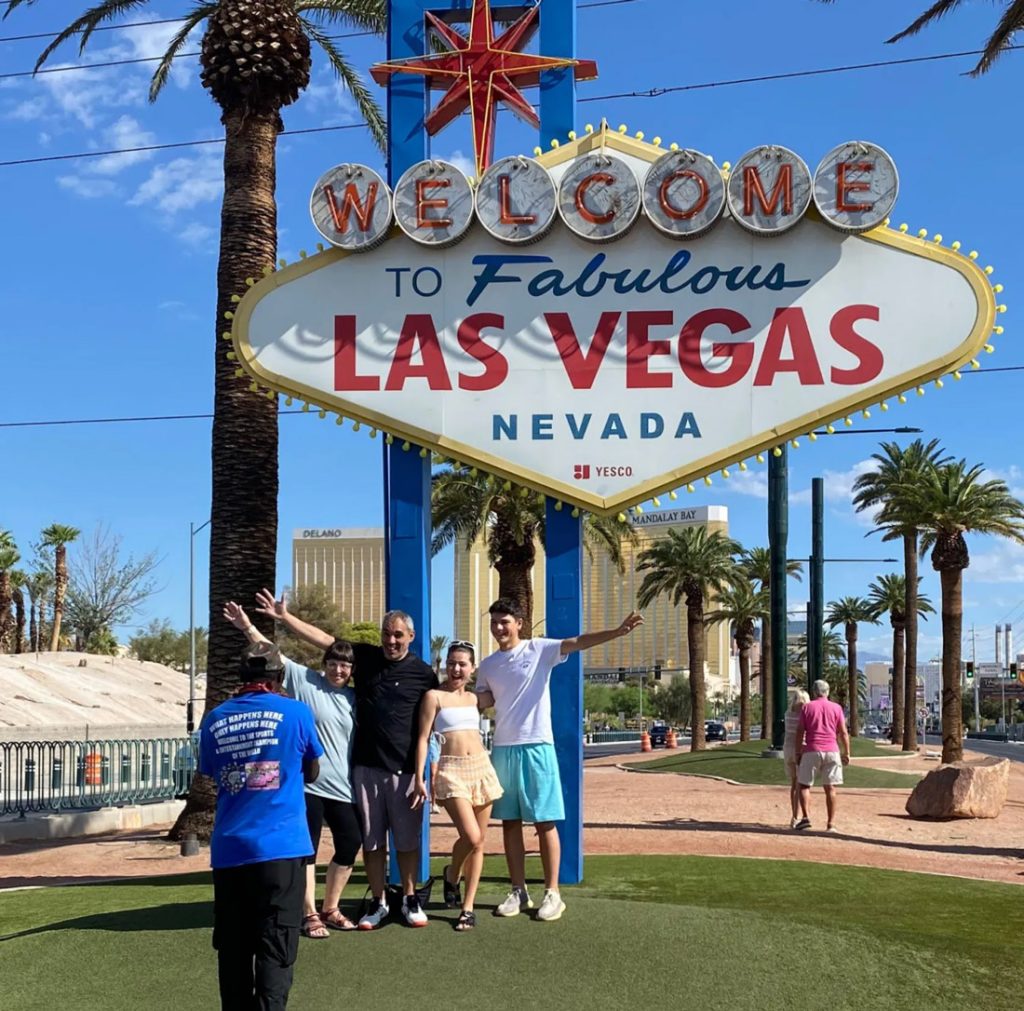Why a Salt Lake company owns the ‘Welcome to Fabulous Las Vegas’ sign
Young Electric Sign Company of Salt Lake City is the owner and caretaker of arguably the most famous ‘welcome to’ sign in the world
It is 8:45 on a weekday morning in Las Vegas and vehicles, including two tour buses that just released their passengers, have filled most of the parking spots. Up ahead, there’s a line of people waiting to have their picture taken next to the attraction.
What’s all the fuss about? Is it a celebrity sighting? Somebody giving away Raiders tickets? David Copperfield’s duck got loose?
Nope. None of the above. The big draw is what has arguably become the most famous city-entrance sign in the world, maybe the most famous sign, period:
“Welcome to Fabulous Las Vegas, Nevada.”
Apparently, like a lot of things in Las Vegas, this goes on day and night — throngs of tourists capturing their visit with a photo that proves they were here. Also, unlike a lot of things in Las Vegas, it’s free.
• • •
Jeff Young can personally attest to the sign’s perpetual popularity. Jeff is executive vice president and trustee of the Young Electric Sign Company, or YESCO — the company born and bred in Utah that owns and maintains the sign.
“It has become a huge draw. We’re the caretakers of an icon,” he says. “Owning it is a great honor for us, for the family, for the organization.”
The story of how a Utah company wound up with the “Fabulous Las Vegas” sign dates back to the company’s founder, a pioneer immigrant named Thomas Young — Jeff’s grandfather — who opened his sign company in Ogden in 1920 and started doing business in Las Vegas in 1932.
His timing was fortuitous because of two recent developments: 1) The use of neon lights in sign-making was just picking up steam, and 2) Nevada’s legalization of gambling in 1931.
To the world, Las Vegas was about to become Sin City; to Thomas Young: Sign City.

Gambling joints and the hotels they were attached to wanted bright lights and big, bold signs, and Young knew how to make them. His first contract in Vegas was with the Boulder Club in 1932.
He continued to supply the growing town with neon signs throughout the Great Depression and World War II, after which he opened a branch of the company in Las Vegas in 1945. That’s when Vegas lit up, literally, with Thomas Young leading the way, building signs at the Stardust, the Mint, the Silver Slipper, the Golden Nugget, the Sahara, and so on and so forth.
As his grandson Jeff says, “If you talk about Vegas and early hotels, it would be hard to find one we didn’t build.” (The same is true today; the company’s imprint is everywhere in the city; the Bellagio, the Aria, New York-New York, the Venetian, the 272-foot LED sign on the Palms, the Hard Rock Cafe guitar, all theirs, to name just a few.)
As the company grew in the ’50s and ’60s, YESCO began to acquire other smaller sign companies, and their signs, including one called Western Neon in 1964.
Western Neon owned the “Welcome to Fabulous Las Vegas” sign. It had been designed in 1959 by one of its employees, Betty Willis. The modest 25-foot sign cost $4,000 to build and was erected beyond the Las Vegas city limits on the south, in the direction of California. The nearest buildings were at least a mile away. There were no traffic jams.
As time went on, the sign stayed put and the city grew to meet it. Now, the Mandalay Bay Hotel is just a stone’s throw away and Allegiant Stadium, the Raiders’ new home (also home to a lot of YESCO signs), is just across the freeway.
Through the years, more and more people kept risking their lives to cross traffic and take pictures by the sign, until the city made the sign an island in the median and erected a parking lot with 12 parking spaces in 2008. In 2012 they added 21 more; in 2015 another 21, and two slots for tour buses. There’s also a traffic light so pedestrians can safely cross Las Vegas Boulevard.
In 2009, the sign was placed on the National Register of Historic Places.
YESCO might own it — the company gets lease payments and maintenance fees from Clark County — but it can’t move it.
What happened in Vegas stays in Vegas.
The sign isn’t copyrighted, which is why it can be found on refrigerator magnets, key chains, T-shirts, placemats, coffee mugs and anything else a logo can be applied to or stamped on. But YESCO has trademarked the sign, to make sure competitors don’t use its image.
And it’s placed its own logo on the famous sign. YESCO can be seen in smaller letters near the bottom of the sign.
“Literally thousands of people every day see our logo on that sign,” says Jeff Young.
If they can find a parking spot.
Read the full article written by Lee Benson at deseret.com

